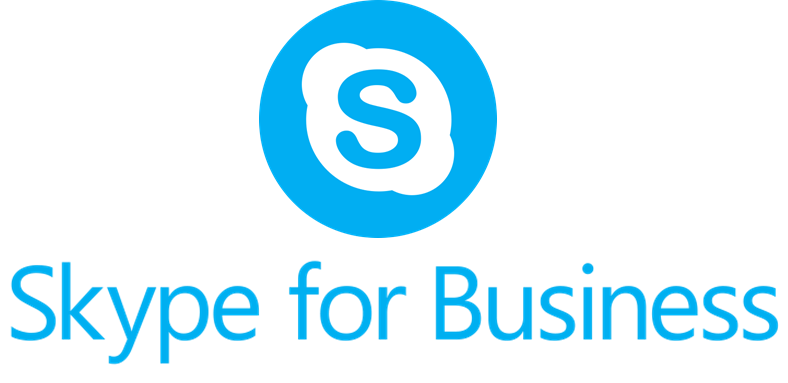- Skype For Business Online Powershell
- Skype For Business Web App
- Skype For Business Online Powershell Connections Are Blocked
- Skype For Business Online Cce
| Includes online versions of Office, plus email | Includes full, installed Office for desktop, plus email | |
| Microsoft 365 Business Basic | Microsoft 365 Business Standard | |
|---|---|---|
| $5.00 user/monthBased on Annual CommitmentStart Trial | $12.50 user/monthBased on Annual CommitmentStart Trial | |
| Note: Microsoft® Teams replaces Skype for Business Online as Microsoft’s professional online meeting solution. | ||
Online meetings with Office Online, email, and file storage and sharing
Plus!
| Online meetings with everything in Office 365 Business Essentials
Plus!
| |
| Money-back guarantee | 15 days | 15 days |
| Connect from Skype for Business desktop app or from web | ||
| Schedule meetings in Outlook | ||
| Join anonymously from web browser or free mobile apps | ||
Share your presentation and transfer control to other meeting participants | ||
| Audio and HD video calling to Skype for Business users | ||
| Advanced meeting options including Polls and Q&A | ||
Online versions of Office including Word, Excel, and PowerPoint | ||
File storage and sharing with 1 TB storage per user | ||
Business class email, calendar, and contacts with a 50 GB inbox per user | ||
| Full, installed Office applications Word, Excel, PowerPoint, Outlook, Publisher, and OneNote on up to 5 PCs or Macs per user | ||
| Office on tablets and phones for the full, installed Office experience on up to 5 tablets and 5 phones per user | ||
| Integration with on-premises communications systems, such as PBX and video teleconferencing systems | ||
| $5.00user/monthBased on Annual CommitmentStart Trial | $12.50user/monthBased on Annual CommitmentStart Trial | |
When you open Skype for Business, the main Skype for Business window will appear: Adding a profile picture If you have uploaded a profile picture to Office 365 through the main portal, it will automatically carry through to Skype for Business. To upload or edit your picture from within Skype for Business: 1. Since its introduction, Skype for Business Online has been a valuable tool for millions of people around the world. By combining instant messaging, calling, and video into one application, Skype for Business Online established new possibilities for business communications. Microsoft Teams is the next chapter in that vision.
Skype for Business is part of the Microsoft 365 suite of products. What's Skype for Business? Some Office 365 plans do not include the full Skype for Business client. For these plans, Skype for Business Basic is available without additional cost.
All Our Skype for Business plans include
FAQ - Your questions? We got answers!

How exactly will Apps4Rent help me with these plans?
Apps4Rent will help you to set up your DNS server and external firewall to optimally deal with Skype for Business Online network traffic. We will also assist in setting up mobile clients and creating new users. We advise you on the right choice of plans, for using Internet Protocol (IP) phones with Skype for Business.

Is a Skype for Business accounts separate from personal Skype account?
Yes. Skype for Business will use the Active Directory credentials. Personal Skype account will continue to use the individual’s Skype ID.
As a current customer, how do I get Skype for Business?
If you are a current Lync Server customer with Software Assurance, you will automatically be able to use Skype for Business. Office 365 customers with Lync Online will receive updates automatically. The way Lync was earlier, Skype for Business will also be an integral part and experience for Office as well as Office 365.
Is Skype for Business a different brand than the current Skype Brand?
No. Both belong to the same Skype Brand. User accounts, contacts, user interfaces, and functions will be the same for both.
Submit Your Requirements
Skype for Business 2019 vs Microsoft Teams 2021
Chatter in the Microsoft community is all about Skype for Business 2019. Either Skype for Business Server 2019 or simply concern around using Skype this year and what next year should look like.
Whilst these are totally different topics, they are extremely related.
Businesses opting to stay with Skype for Business, rather than immediately moving to Microsoft Teams must know what they are getting into before making a final decision.
Likewise, by moving from Skype for Business to Microsoft Teams, businesses must know what to expect from the app in the future, as well as today.
Let’s look at some of the key searches, comparisons and useful things to know when deciding whether to stick or twist with Skype for Business.
Jump to:
Skype for Business 2019 Server support from Microsoft
Businesses that have recently implemented Skype for Business 2019 Server need not worry that they have to migrate away immediately. Microsoft has committed to supporting SfB Server 2019 until at least 2024.
Tom Arbuthnot, Modality Systems, updated his blog on June 15th 2019, to confirm Skype for Business Server, Exchange Server and SharePoint Server 2019 Mainstream support has now been extended by 3 months to January 2024.
For on-premises Skype for Business users that upgrade to Skype for Business 2019 Server, here are some considerations highlighted by Microsoft:
- In-place upgrades supported when upgrading to Skype for Business Server 2015 won’t be supported with Server 2019
- Upgrade side by side from Lync 2013 or Skype for Business Server 2015 remains supported
- Pre-requisites: Windows Server 2016 & SQL 2016
- Side by side deployment with Cloud Connector Edition (CCE) remains supported
The urge to move from Skype for Business Server 2015 is provoked by the likelihood that updates and features will eventually stop being rolled out to previous versions.
Microsoft should communicate a date for this in the future.
SfB Server 2015 vs SfB Server 2019
For SfB admins and architects running SfB Server 2015, there are some key differences to call out:
- The SQL back end changes from Mirror and Always On to simply Always On
- More cloud features are introduced in SfB Server 2019 (and will likely continue to be introduced) like auto attendant and call data connector
- Hardware requirements change from 32GB RAM to 64GB RAM
- Exchange Online Unified Messaging replaced with cloud voicemail
- XMPP Gateways and proxies deprecated
Microsoft has provided a full deployment guide for SfB Server 2019. UC Primer has also created a shortened version for admins looking to get to grips with 2019 before rolling out.
You don’t have to move to Microsoft Teams immediately
For users of Skype for Business Online, Microsoft has initiated automatic upgrades.
Reports and shared experiences suggest that this has only happened to sub-500-seat tenants with no or minimal usage.
Tenants outside of this criteria but using SfB Online will be able to continue doing so until they complete their transition to Microsoft Teams.
That means you don’t need to rush your decision.
Microsoft has confirmed the end of life date for Skype for Business Online as 31st July 2021.
Microsoft confirmed that the roadmap for bringing Skype for Business Online features and functionality into Microsoft Teams is now complete.
This is not to say that moving from Skype for Business 2019 Server to Microsoft Teams needs to be rushed either.
Microsoft has committed to supporting on-premises and hybrid models for years to come.
When you decide the time is right to migrate, Microsoft has outlined a migration path for users and admins.
Many Microsoft partners have also developed their own materials to walk you through the process of migrating from Skype to Teams. If you take additional Skype for Business services, you should check with them to see that any add-ons will remain supported.
Make sure Microsoft Teams is interoperable with your other apps
When you do decide to migrate to Microsoft Teams, you will likely have a handful (or more) of other messaging apps in your business.
Why does this matter?
By rolling out Microsoft Teams to users already using apps like Slack and Cisco Webex Teams, you are encouraging them to over-collaborate.
You need to ensure interoperability is high on your requirements list.
One example of this, highlighted in Okta’s “Businesses at Work” report for 2019, tells a compelling story.
Skype For Business Online Powershell
“Over 28% are chatting on Slack. Nearly 24% are connecting with their colleagues on Zoom. And over 28% of Okta’s Office 365 customers are “double bundling” themselves, subscribing to G Suite as well.”
If this is a scenario know in your company (and it could be unknown but definitely happening), there are several solutions that you could implement.
Connect Slack and Microsoft Teams
We’ve broken down the 4 most common methods of connecting Slack and Microsoft teams here. Suggestions include:
- Connect Slack and Microsoft Teams without introducing a new chat client
- Configure webhooks for Slack & Microsoft Teams
- Use APIs & bots to connect Slack & Microsoft Teams
- Full synchronization between Slack and Microsoft Teams
Connect Cisco Webex Teams and Microsoft Teams
We’ve also broken down the 4 most common methods of connecting Webex Teams to Microsoft Teams in this post. Suggestions include:
- Cisco Webex Teams and Office 365 integration
- Bot integration for Microsoft Teams and Cisco Webex
- Host meetings in Microsoft Teams
- Full synchronization between Microsoft Teams and Cisco Webex Teams
Skype for Business 2019 decisions
Ultimately, there are two major decisions that must be made.
1. If you run Skype for Business Online, do you move to Microsoft Teams now, or wait until prompted by Microsoft?

The industry leaders like Microsoft, Cisco and Slack are pushing the collaboration agenda.
Instant messaging is becoming persistent chat. Communication is becoming collaboration.
Whilst apps like Jabber and Skype for Business still exist and have even been made interoperable with their collaboration counterparts, the focus is on Webex Teams and Microsoft Teams.
Some of the key differences between “legacy” chat apps and modern collaboration apps are outlined in this post comparing Skype for Business and Microsoft Teams.
According to research published by Queens University of Charlotte, This new “way of working” is recognized by about 75% of employers who rate teamwork and collaboration as “very important”.
A Stanford study also highlighted that users who were primed to act collaboratively stuck at their task 64% longer than their solitary peers.
The bottom line:
The question is definitely when rather than if.
It is unlikely (but not impossible) that auto upgrades will be rolled out to organizations with high usage.
It is definitely worth having the discussion with your Microsoft contacts, even if only to prepare for the future.


2. If you run Skype for Business Server, should you upgrade to Skype for Business 2019 Server, or skip it and migrate to Microsoft Teams?
There are several factors that help answer this question.
- Are you able to leverage existing on-premises equipment without risking maintenance lapsing or needing to invest in additional hardware?
- Is your business happy with its current productivity levels and collaborative outputs?
- Does your network and communications estate satisfy the pre-requisites for Skype for Business 2019 Server?
- Do you have sufficient ways to connect Skype for Business to other messaging apps like Slack and Cisco Webex Teams?
You know your business best, but don’t make this decision until you’ve thoroughly assessed which app is right for your future collaboration strategy.
Skype For Business Web App
I’m ready to move to Teams, how do I ensure interoperability with my other apps?
Simple.
Choose your combination of apps below and request a demo.
Skype For Business Online Powershell Connections Are Blocked
The rest is down to us.
Skype For Business Online Cce
You must be logged in to post a comment.